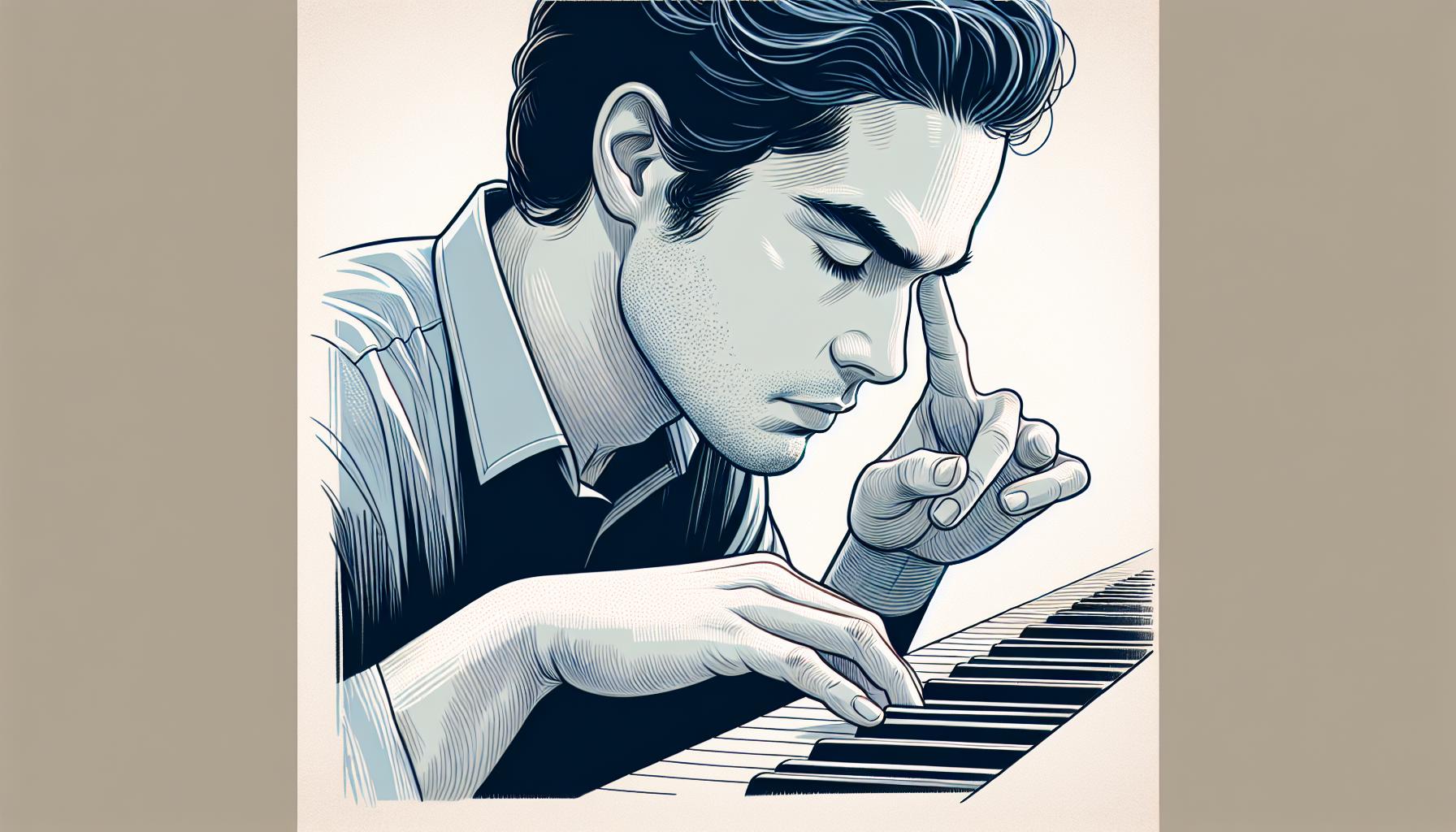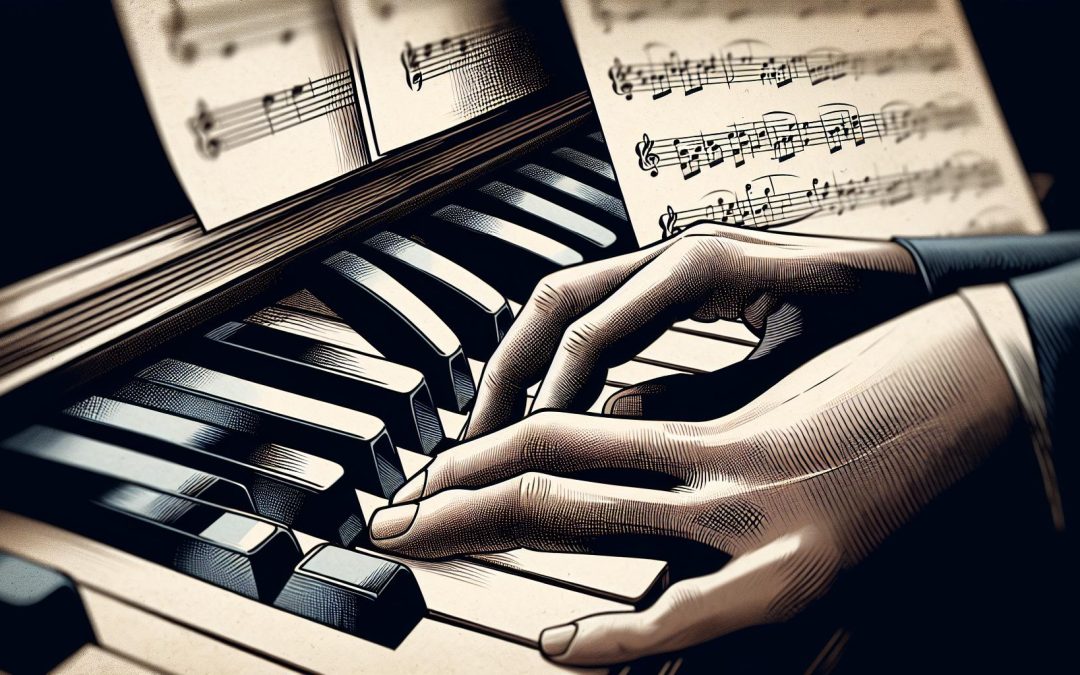Memorizing a piano piece quickly might seem like a daunting task, but it's definitely achievable with the right approach. Whether you're preparing for a performance or simply want to expand your repertoire, mastering this skill can make all the difference.
They say practice makes perfect, but when it comes to memorizing music, it's not just about the quantity of practice, but the quality. By focusing on effective strategies, you'll find yourself playing that new piece from memory faster than you thought possible. Let's dive into some tips and tricks that'll help you memorize a piano piece quickly, making your practice sessions both productive and enjoyable.
Understanding the Piece
Before diving headfirst into memorization techniques, it's crucial to develop a deep understanding of the piano piece at hand. This foundational step not only aids in quicker memorization but also enhances one's ability to perform the piece with emotional depth and technical precision.
The first step in understanding a piece is analyzing its structure. Most compositions follow a specific form, be it sonata-allegro, binary, ternary, or theme and variations. Recognizing this structure helps in breaking down the piece into smaller, more manageable sections, making the memorization process seem less daunting.
After grasping the overall structure, attention should be directed towards the harmonic progression. Understanding the chords and key changes within a piece provides insights into its emotional landscape. This knowledge allows musicians to anticipate shifts in mood or dynamics, making memorization more intuitive.
Motivic analysis is another pivotal aspect of understanding a piano piece. Many compositions are built around recurring motifs or themes. Identifying these elements not only aids in memorization but also in conveying the piece's narrative and emotional underpinnings through performance.
Engagement with the piece's historical context and the composer's intentions can also significantly bolster one's connection to the music. Researching the period in which the piece was written and the composer's possible emotional state or intentions at the time can offer invaluable insights. This deeper level of engagement makes memorization feel more like a process of discovery than rote learning.
To streamline this process, here are a few strategies:
- Listening to Recordings: Immersing oneself in different interpretations of the piece can provide a broad perspective on its possible nuances and emotional range.
- Marking the Score: Annotating the score with notes on dynamics, phrasing, and technical reminders can reinforce memory through visual cues.
- Discussion and Analysis: Talking about the piece with a teacher or peers can uncover new insights and solidify one's own understanding and interpretation.
In the journey of memorizing a piano piece, understanding its every facet doesn't just result in quicker memorization—it transforms the entire experience, merging technical skill with emotional expression for a truly captivating performance.
Engaging thoroughly with the piece ensures that when fingers glide over the keys, they're not just hitting notes—they're telling a story. And it's this narrative that remains etched in memory long after the specifics of technique have faded, making the process of memorization not just effective, but profoundly meaningful.
Breaking it Down into Sections

When embarking on the journey to memorize a piano piece quickly, one efficient strategy is to break the piece down into manageable sections. This method not only simplifies the learning process but also helps in understanding the structure and cohesiveness of the piece. Think of it as dissecting a complex puzzle into smaller, more manageable pieces, making it easier to see how everything fits together.
Start with the Big Picture
First, they should get a general sense of the piece by playing through it, or listening to a recording, to identify its distinct sections. These could be marked by changes in melody, rhythm, or key. By understanding the overall structure, they're better prepared to tackle each section individually.
Divide and Conquer
Next, the pianist should divide the piece into logical sections. This could be as simple as breaking it down into measures, phrases, or movements, depending on the complexity of the piece. Importantly, each section should be practiced separately, focusing on mastering one part before moving on to the next.
Focused Practice
During practice, attention should be directed towards the nuances of each section. They might start with the right hand alone, then the left, before combining them. This focused approach ensures that they're not just playing the notes but also paying attention to the dynamics, articulation, and expression required in each segment.
Segment Repetition
Repetition is key in this stage. They should repeat each segment multiple times until it can be played from memory comfortably. It's not uncommon for musicians to practice a single bar or phrase dozens of times to get it right. While repetition might seem tedious, it's a powerful tool in building muscle memory and confidence in one's ability to recall the piece.
Gradual Assembly
Once they're comfortable with individual sections, the next step is to start linking them together gradually. They might begin by connecting two sections, then three, and so on until they can play larger portions of the piece from memory. This gradual assembly helps in understanding how the sections relate to each other and brings cohesion to the piece as a whole.
Review Often
Regular review sessions are critical throughout this process. They should regularly revisit previously memorized sections to ensure they're still remembered correctly. These review sessions can also be an opportunity to refine any rough edges and ensure that the transitions between sections are smooth and seamless.
Hands Separate Practice

Once pianists grasp the overall structure of a piano piece and have broken it down into manageable sections, the next step in efficient memorization is to practice with hands separately. This technique involves focusing on one hand at a time, which allows for a deeper understanding of each hand's role and can significantly enhance muscle memory without overwhelming the brain.
Why It Works
Practicing hands separately is effective because it lets musicians pay close attention to the intricacies of each part. When they isolate the left hand, for example, they can hone in on the bass patterns, harmonies, and any complex rhythms that might need extra attention. Conversely, focusing solely on the right hand allows for detailed work on melody lines, articulation, and phrasing. This method ensures that each hand develops strength and independence, essential components for playing both accurately and expressively.
Steps to Follow
- Start Slow: Begin by practicing each hand slowly, ensuring accuracy before increasing the tempo. This approach helps in building a solid foundation and reduces the likelihood of ingraining mistakes.
- Use a Metronome: To maintain a consistent tempo and improve rhythmic accuracy, it's beneficial to practice with a metronome. Start with a slower setting than the piece’s intended tempo and gradually increase as proficiency improves.
- Focus on Difficult Sections: Identify and spend extra time on the most challenging sections for each hand. Repeating these parts until they're comfortable can make integrating both hands together much smoother.
- Regular Review: Regularly revisit sections previously practiced with each hand to reinforce memory and maintain technical skill.
Integrating Both Hands
After gaining confidence and accuracy with each hand separately, the next phase involves slowly bringing both hands together. This integration should begin at a slower tempo than either hand was practiced individually. Pianists might find that coordinating both hands introduces new challenges, but the solid foundation built from separate hands practice significantly eases this transition.
By applying these techniques, musicians can approach the memorization process with a structured and efficient strategy. Hands separate practice not only aids in memorization but also improves overall piano technique, leading to more polished and expressive performances. Teachers and experienced pianists alike recommend this method for its effectiveness in breaking down and conquering the complexities of piano pieces.
Visualization Techniques

Incorporating visualization techniques into piano practice has emerged as a powerful tool for memorizing music more efficiently. Rather than solely relying on muscle memory, pianists who visualize their pieces can create a mental map of their music, leading to faster memorization and more secure performance.
Visualization involves seeing the music in one's mind's eye, whether it’s the keys, the notes on the sheet music, or even the movements of the hands. This technique allows the pianist to practice away from the piano, making memorization a constant, accessible process. Pianists often find that by visualizing, they can identify problem areas and work through them mentally before physically tackling the piece, saving time and reducing frustration.
Steps to Effective Visualization
- Start with Small Sections: Begin with a measure or a few notes. Close your eyes and try to visualize playing those notes. See the keyboard, your hands, and even the sheet music in your mind.
- Build a Mental Map: Gradually, as small sections become familiar, expand your visualization to larger sections. This helps build a cohesive understanding of the piece's structure and flow.
- Incorporate Other Senses: Try to hear the music in your imagination. Feeling the keys and the physical movements can also enhance the effect. The more senses involved, the stronger the memorization.
- Practice Away from the Piano: Use spare moments throughout the day to mentally practice your pieces. This can significantly increase your familiarity and comfort with the music.
- Review Before Sleeping: Research suggests that reviewing material before sleep can enhance memory retention. Visualize the piece before going to bed to reinforce your memory.
- Increased Focus: Visualization requires and develops a high level of concentration, aiding in deeper learning and memorization of the piece.
- Versatility: This technique is not limited by the availability of a piano, making practice more flexible and frequent.
- Error Reduction: By mentally practicing, pianists can anticipate and correct mistakes before they become ingrained through physical repetition.
- Enhanced Musicality: Visualization promotes a more thoughtful and interpretive approach to the music, beyond just the notes and rhythms.
Putting it All Together

When it comes to rapidly memorizing a piano piece, integrating all the previously mentioned strategies is key. They've learned about starting with smaller sections, building a mental map, incorporating sensory experiences, practicing away from the instrument, and the power of visualization before sleep. Now, it's time to weave these individual practices into a cohesive, effective routine.
First, choose a piece and break it down into manageable sections. This could be by measures, phrases, or even smaller motifs, depending on the complexity of the music. The goal is to focus intensely on a single part, ensuring it’s committed to memory before expanding.
Building the mental map is the next crucial step. As they piece together sections, visualizing the keys, hand movements, and notes becomes increasingly essential. This process not only involves the mind's eye but should engage all senses. Imagine the feel of the keys, the sound of the music, and even the emotional tone of each section. This multi-sensory approach solidifies memory and enhances musicality.
Practicing away from the piano plays a surprisingly pivotal role. They must take time throughout the day to mentally rehearse the piece, whether it’s during a break at work, on a walk, or right before bed. These mental practice sessions are as crucial as the ones at the piano because they reinforce the mental map without the physical strain of playing.
Here’s where visualization techniques before sleep come in handy. Reviewing the piece in their mind, note by note, before sleeping, benefits significantly from the brain's natural nighttime processes. During sleep, the brain strengthens new memories. By focusing on the piece before bedtime, they’re essentially telling their brain that this information is important and needs to be retained.
To ensure that these practices are effective, they should also include other senses in their visualizations. Hearing the music in their mind, feeling the touch of the keys, and even engaging their sense of smell or emotion connected to the piece can make the mental practice more vivid and powerful.
Let’s not forget the importance of regular, focused practice sessions at the piano. These should integrate everything: the breakdown of sections, the sensory-rich mental mapping, and periodic away-from-the-piano visualizations. Each session should aim not just for note-perfect playing but for a deep, expressive understanding of the piece.
Conclusion
Mastering the art of memorizing piano pieces quickly is a journey that blends method with creativity. By adopting the strategies outlined, players can transform their practice sessions into a more efficient and enjoyable process. It's about more than just hitting the right notes—it's about immersing oneself in the music, understanding its flow, and making it an extension of oneself. Remember, patience and perseverance are key. With each piece learned, not only does one's repertoire expand, but so does their connection to the music and the instrument. Happy practicing!
Harlan Kilstein began playing piano during covid with no piano background at all. He taught himself how to play learning what to do and what not to do.
Today he's an advanced intermediate player and can help you grow in your skills because he learned all this on his own.







